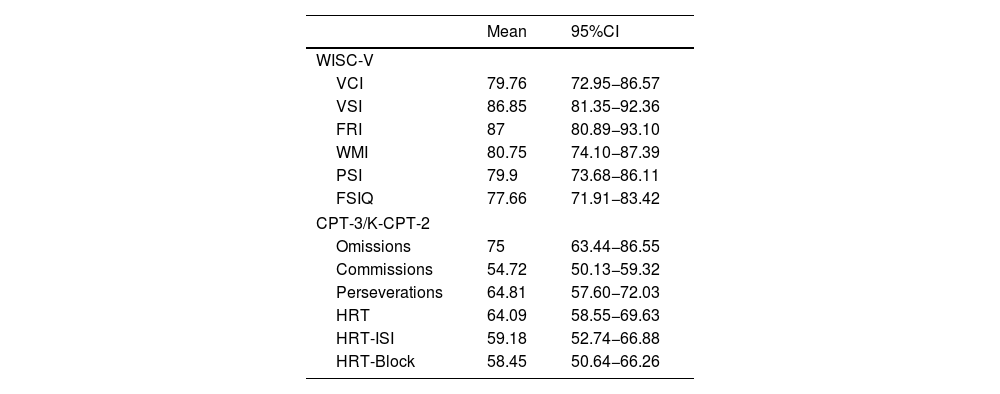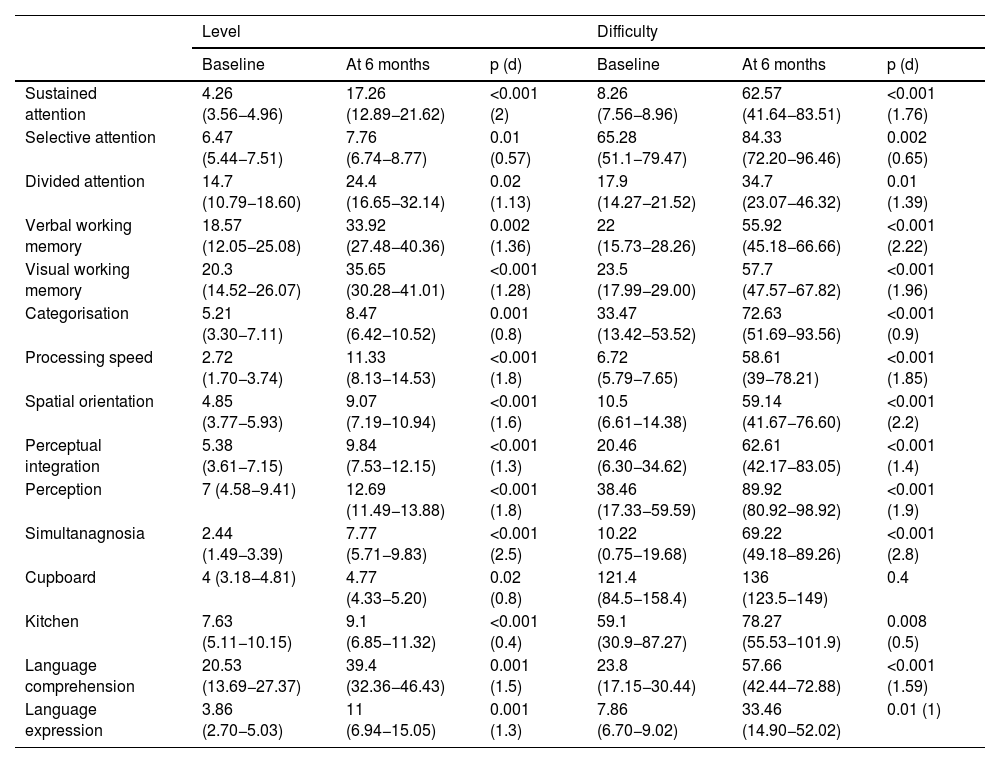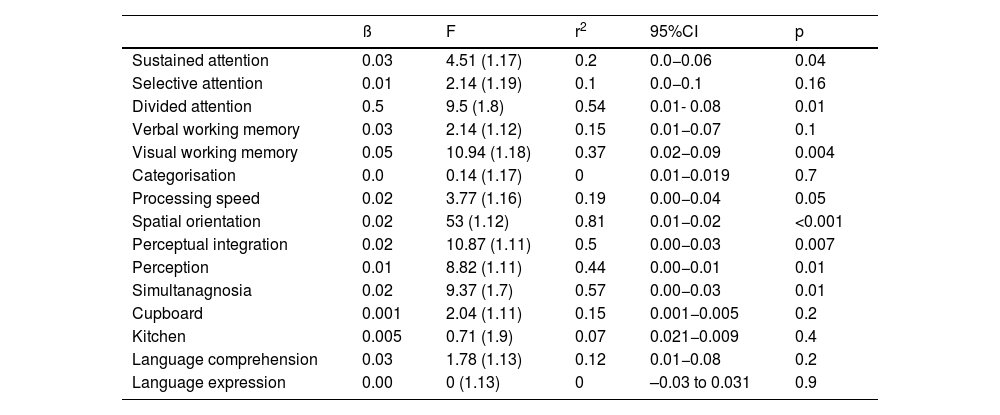Social distancing measures due to the COVID-19 pandemic prevented many children with neurodevelopmental disorders from accessing face-to-face treatments. Telerehabilitation grew at this time as an alternative therapeutic tool. In this study we analysed remote cognitive rehabilitation in neurodevelopmental disorders.
MethodsThis was a prospective, quasi-experimental (before-after) study that included 22 patients (mean age 9.41 years) with neurodevelopmental disorders who had telerehabilitation for over six months.
ResultsAfter six months of telerehabilitation, a statistically significant improvement was found with a large effect size in these areas: attention (sustained, selective and divided), executive functions (verbal and visual working memory, categorisation, processing speed), visuospatial skills (spatial orientation, perceptual integration, perception, simultanagnosia) and language (comprehensive and expressive). On the Weiss Functional Impairment Scale, all areas (family, learning and school, self-concept, activities of daily living, risk activities) improved with statistical significance. We found a positive correlation between the number of sessions and the improvement observed in executive functions (visual working memory, processing speed), attention (sustained attention, divided attention) and visuospatial skills (spatial orientation, perceptual integration, perception, simultanagnosia). We did not find statistical significance between the family structure and the number of sessions carried out. A high degree of perception of improvement and satisfaction was observed in the parents.
ConclusionsTelerehabilitation is a safe alternative tool which, although it does not replace face-to-face therapy, can achieve significant cognitive and functional improvements in children with neurodevelopmental disorders.
Las medidas de distanciamiento social debidas a la pandemia por COVID-19 impidieron que muchos chicos con trastornos del neurodesarrollo pudieran acceder a tratamientos presenciales. La telerrehabilitación creció en este tiempo como una herramienta terapéutica alternativa. El objetivo es analizar la telerrehabilitación cognitiva en trastornos del neurodesarrollo.
MétodosEn este estudio prospectivo, cuasi-experimental (antes-después), se incluyó a 22 pacientes (media de edad, 9,41 años) con trastornos del neurodesarrollo que realizaron telerrehabilitación con el programa Rehametrics por más de 6 meses.
ResultadosLuego de 6 meses de telerrahabilitación, se constató una mejoría estadísticamente significativa con un gran tamaño del efecto en áreas de: atención (sostenida, selectiva y dividida), funciones ejecutivas (memoria de trabajo verbal y visual, categorización, velocidad de procesamiento), habilidades visuoespaciales (orientación espacial, integración perceptiva, percepción, simultagnosia) y lenguaje (comprensivo y expresivo). En la Escala de Impedimento Funcional de Weiss mejoraron con significancia estadística todas las áreas (familia, aprendizaje y escuela, autoconcepto, actividades de la vida diaria, actividades de riesgo). Se constata una correlación positiva entre la cantidad de sesiones y la mejoría observada en funciones ejecutivas (memoria de trabajo visual, velocidad de procesamiento), atencionales (atención sostenida, atención dividida) y habilidades visuoespaciales (orientación espacial, integración perceptiva, percepción, simultagnosia). No encontramos significancia estadística entre la estructura familiar y la cantidad de sesiones realizadas. Se observó un alto grado de percepción de mejora y satisfacción en los padres.
ConclusionesLa telerrehabilitación puede ser una herramienta alternativa segura que, sin reemplazar la presencialidad, puede lograr mejoras cognitivas y funcionales significativas en niños con trastornos del neurodesarrollo.
Artículo
Comprando el artículo el PDF del mismo podrá ser descargado
Precio 19,34 €
Comprar ahora









